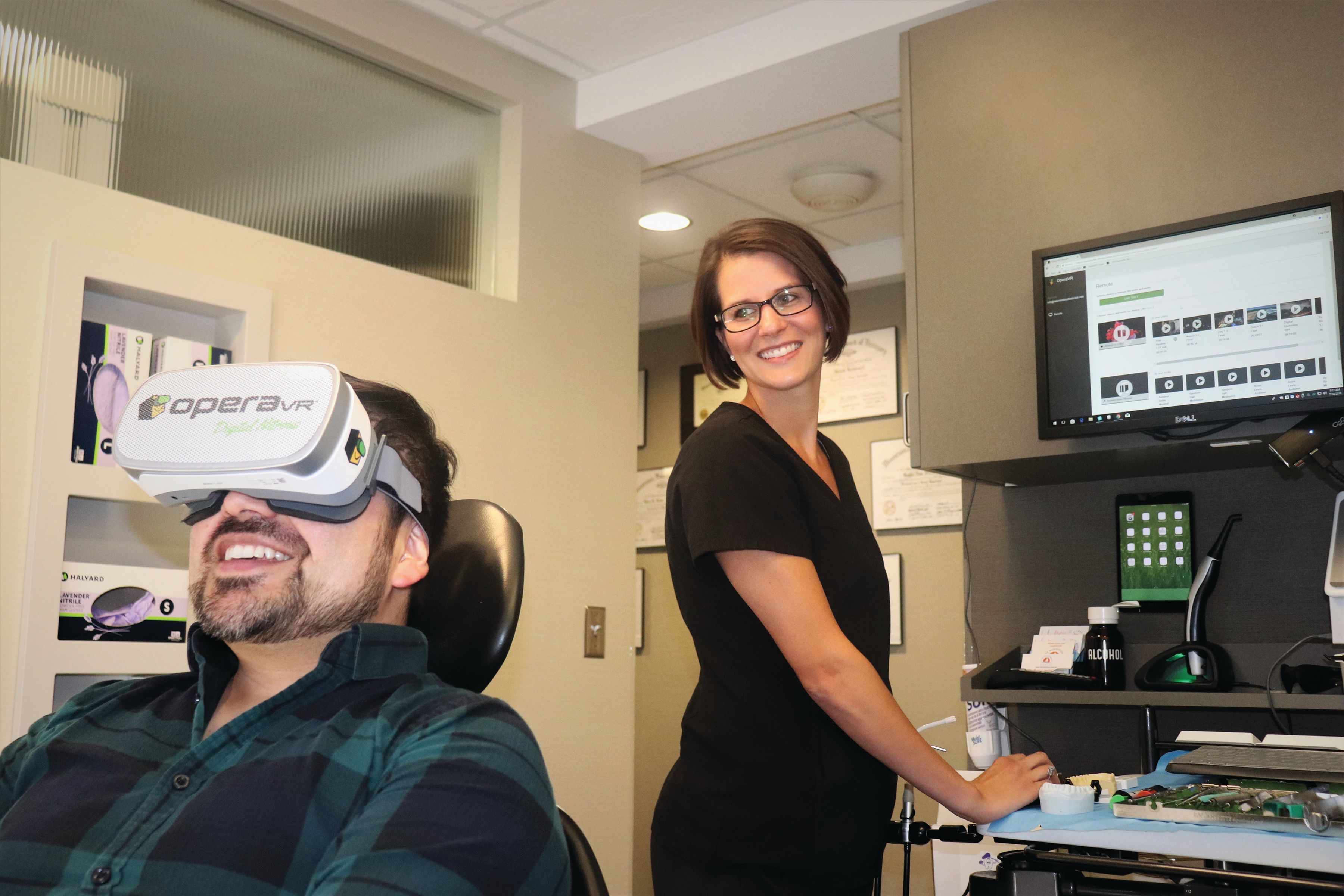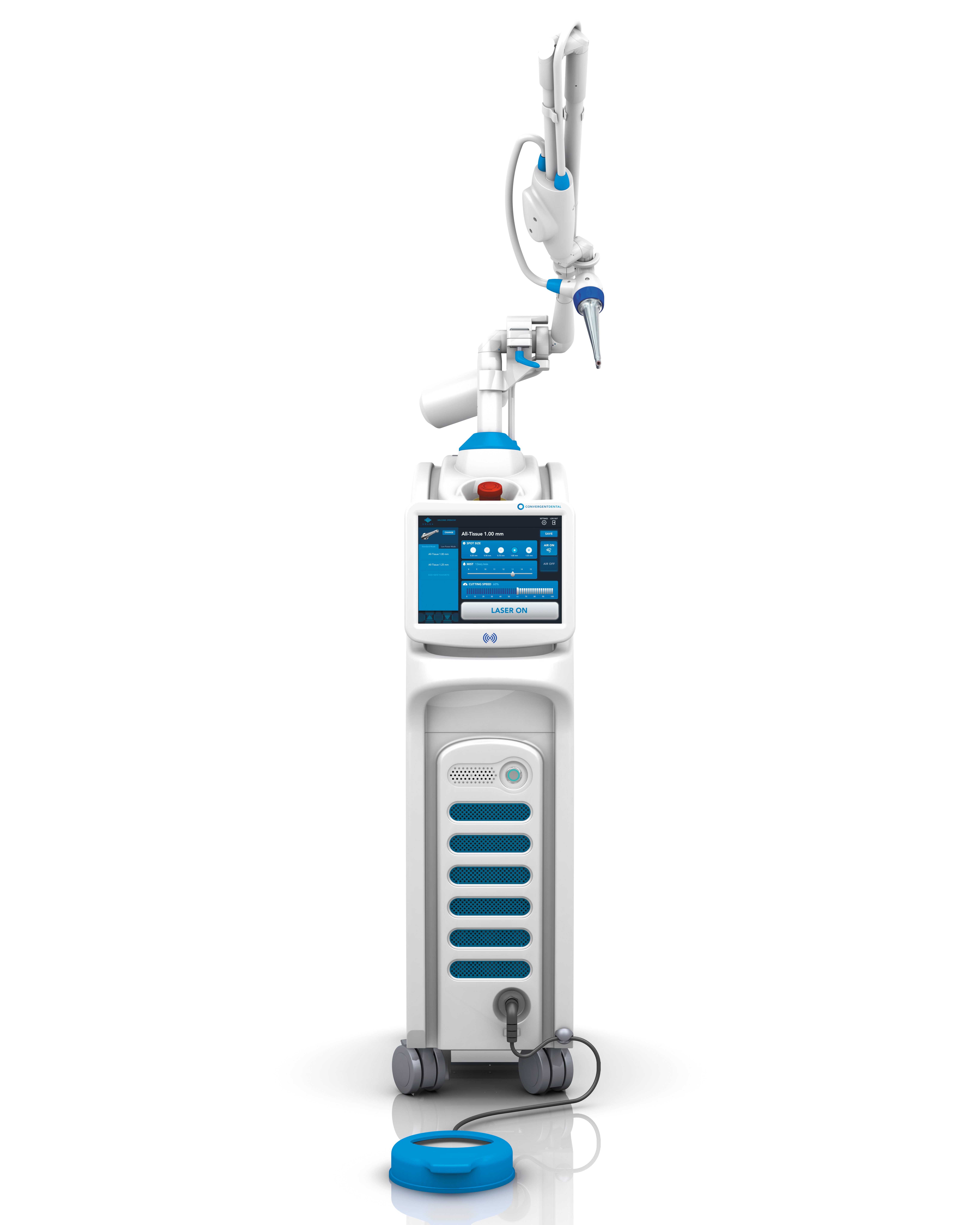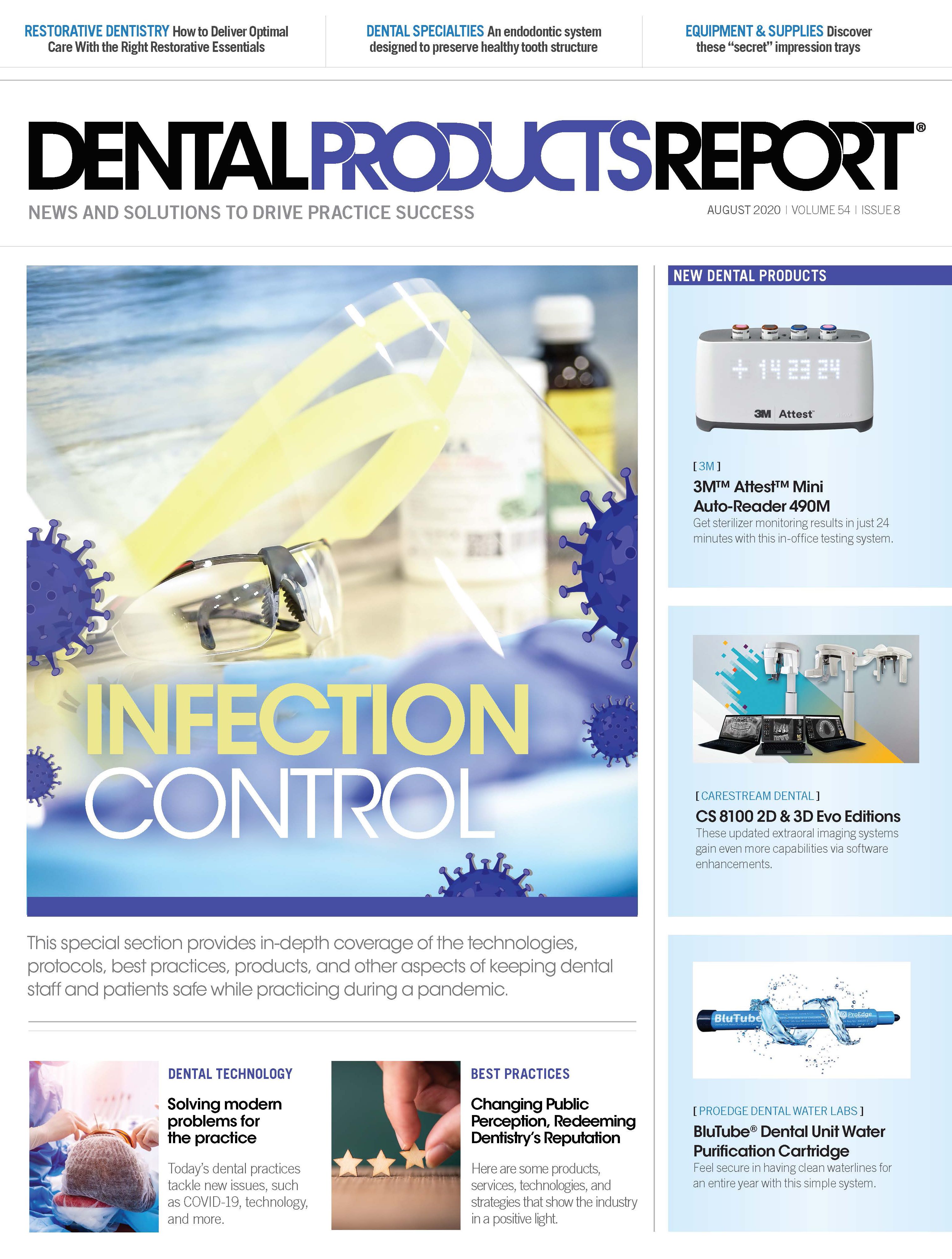Changing public perception: Redeeming dentistry’s reputation
Here are some dental products, services, technologies, and strategies that show the industry in a positive light.
Photo Credit: Christianchan / STOCK.ADOBE.COM

It’s not fair, but it’s true. Dentists and dentistry, in general, have a reputation that is often less than fantastic. But when you dig deeper, you usually find that people love their dentist—they just don’t like going to see him or her.
We spoke to several dentists and dental industry professionals about products and services that could turn things around. Here’s what they had to say.
Mike Cataldo, CEO of Convergent Dental, which makes Solea lasers, says people have a complicated relationship with their dentist.
“Dentists tell me they hear from their patients, ‘Doc, I love you. I hope I don’t see you again for a long time,’” Cataldo says.
He says people hate going because they think the procedures or cleaning will hurt. Cataldo describes this as an “irrational, acquired fear” that gives an unfair reputation to dentists.
“In my experience, dentists don’t hurt people very often. The fact is, they’re generally very good at not hurting people,” Cataldo says.
Jonathan Bass, content marketing manager for RevenueWell, says patients feel vulnerable when they are lying in the dental chair with their mouths open. This emotion is compounded by the personal nature of having the dental team put their hands in the patients’ mouths. Add in the fact that coronavirus disease 2019 can be transmitted through molecules in human fluids, and feelings of exposure intensify.
Patients have to trust that dentists know what they are doing, Bass says, just as you would trust a car mechanic to work on your car. Sometimes a car mechanic upsells you on repairs you don’t need, and sometimes an unethical dentist will, also. When this happens, Bass says it hurts the whole profession.
“A few bad apples can ruin it,” Bass says.
Eric Pulver, DDS, FRCD, an oral surgeon in Highland, Indiana, and chief dental officer at Denti.ai, says any profession’s reputation, including dentistry, can always improve. While dentists should embrace technology and innovation, they should also bring with them the standards of care, ethics, and trust established in the past. Dentists have a social contract with their communities built on respect and trust, which carries specific responsibilities.
“Because of our training and our position in society, we shouldn’t just provide what’s expected. We should be striving to go beyond what’s expected and create something new,” Pulver says.
Bryan Laskin, DDS, a dentist in Wayzata, Minnesota, and founder of OperaDDS, says people view the dental experience as inconvenient, expensive, and a necessary evil, comparable to a bandage you have to rip off. Some practices have responded by designing a spa atmosphere in the office, which Laskin thinks is a move in the wrong direction. Competence, efficiency, and organization are more useful for improving the patient experience.
OperaVR goggles are a virtual reality alternative for reducing patient anxiety.

“Having an uncluttered front desk sends a better signal than having a paraffin wax bath for patients to dip their hand in,” Laskin says. “The profession has divided the patient’s experience from clinical care, and those two are intertwined. Directionally, we, as a profession, have completely missed the mark as to what constitutes a better patient experience.”
Brian Connolly, vice president of business development in the Americas for Medit, says people may not have updated their impression of the dental market over the years. However, by marketing implants and clear aligners on television, dentists have inspired people to learn more about dentistry and how treatments have changed.
“My feelings are highly optimistic that the dental industry will have one of the biggest expansions for treatment with the digitizing of the patient and the ability to share the needed information for knowledgeable decisions on treatment,” Connolly says.
Bob Brandon, general manager of Keating Dental Arts in Irvine, California, describes dentists as healers of the mouth and oral cavity, and artists of the smile. He says dentists also have a high standard of success with the line between success and failure measured in microns. As a dentist’s son, he knows that dentists put their patients’ care and interests before anything else, that dentistry is a healing profession.
“Nobody goes into the dental profession looking to get rich,” Brandon says. “Sure, most dentists can achieve a comfortable lifestyle, but it requires a lot of education, hard work, and dedication to their craft.”
Products Can Help Change the Reputation
An assortment of products and services can improve the complicated relationship that patients have with their dentists.
Any relationship starts with a foundation of trust, Bass says. RevenueWell’s software connects with your patients in many ways, from communicating about treatment plans before an appointment, to a customized text checking in after an appointment, to sending postoperative instructional videos.
“You can personalize the messages, connect with patients, reach out to them beyond that time in the chair,” Bass says.
Bass also thinks managing online reviews is critical. Online reviews help people get a feel for the dentist, the team, and even the cleanliness of the practice when gathering information about which practice to select.
“From a consumer’s point of view, you can see a lot about a practice overall in online reviews,” Bass says.
RevenueWell’s software can connect clinicians with their patients in many ways.

He also recommends using patient satisfaction surveys, particularly in the COVID-19 environment, when many practice procedures are changing. Checking in with patients provides insight into how they feel about how you are doing and what you can do to improve.
“Surveys can show you what your patients are focusing on, so you know what you can coach the team on,” Bass says.
Changing patients’ perceptions requires investing in products that enhance the patient experience, Brandon says. Three of his favorites are The Wand by Milestone Scientific, a computer-assisted system for single tooth local anesthesia; the Apex Dental Materials line of adhesives and cement; and the Isolite line by Zyris for patient comfort and infection control. For rapid and comfortable healing, Brandon recommends AMD’s lasers. He also supports investing in small companies that want to be your partner in success.
“A high-quality dental laboratory based in the United States should also be strongly considered; do not risk your reputation by trying to save a few dollars outsourcing this important aspect of your practice,” Brandon says.
Medit’s recent launch of the i500 intraoral scanner into the clinical market followed 20 years of the company’s experience scanning in the industrial world and also dental laboratories. The company, based in South Korea, has redefined the price point in the space for clinicians, while patients appreciate how scanning improves the dental impression experience.
“Dental impressions are now done with a digital camera scanner,” Connolly says. He says intraoral scanners and digital impressions allow patients to get a glimpse of what’s possible for themselves.
“There are so many simulators today that can show patients their before and after, allowing them to make a better decision on their treatment,” Connolly says. “The iOS scanning tool is an exciting tool to help make treatment acceptance easier.”
Another way to build a relationship with patients is to let patients know you care about what scares them. OperaVR goggles are a virtual reality alternative for reducing patient anxiety. By overwhelming the senses and distracting patients from what is happening while in the chair, patients do not notice the sounds, smells, and sights that make them nervous, according to Laskin.
“It’s similar to nitrous oxide, but without the drug,” he says.
If OperaVR distracts patients, it does the opposite for dentists. These goggles free dentists to do what they need without distraction, helping them deliver a higher quality of care, Laskin says.
“Eighty percent of adults in the U.S. have some type of dental anxiety, and we, as dental professionals, get desensitized. But it’s pervasive,” Laskin explains. “One of the beautiful things about OperaVR is that in addition to addressing this issue directly, it’s a physical manifestation that you care about that anxiety.”
Many times, patient anxiety can be boiled down to two things in the operatory: the drill and the needle. The Solea dental laser takes the drill and needle out of the equation, which Cataldo says will change the dentist’s reputation.
“They still love their dentist. They just love their dentist more when they don’t use the needle and drill,” Cataldo says.
Once patients realize there is no needle or drill, word travels fast. Cataldo says dentists who incorporate the Solea generally quit advertising after 12 months because they max out their ability to take on new patients.
“Once you build enough momentum,” Cataldo explains, “advertising takes care of itself.”
In today’s dental environment, infection control is on everyone’s mind. Solea did some measurements of the laser versus the drill and discovered that the Solea reduced the amount of splatter in the operatory. Cataldo says at 2 cm from the patient’s mouth, there was 98% less splatter with Solea, and at 8 cm, there was 99.9% less splatter.
“The drill is spraying three times as much water when it cuts than Solea, and it is spraying it against a rotation bur circulating at 400,000 rpm, sending that water and goop up to 18 inches out of the patient’s mouth,” Cataldo says. “With the Solea, there’s nothing to project the water, virus, and bacteria out of the patient’s mouth, so it’s much safer.”
Using the Solea laser can dramatically reduce the amount of splatter.

Dentists sometimes have anxiety, too, but not about what they did. Instead, dentists feel concerned about what they didn’t do or might have missed. When dentists are confident that someone (or something) has their back, they can focus on patient care, and their confidence puts patients at ease.
Denti.ai uses machine learning algorithms and expertise of leading specialists in oral and maxillofacial pathology and radiology to identify and detect any deviation from the radiology norm. The technology takes a panoramic radiograph, links in bitewings and periapical images and, using computer vision, sees what the human eye can’t. Denti.ai
also has a patent-pending system for automated charting to populate seamlessly into the electronic medical record.
“It points out findings that we may have seen, or maybe we didn’t see,” Pulver says.
Pulver says Denti.ai can provide dentists with standardization of care, calibration, and earlier intervention, which may result in less expensive care.
“It will help us be the best possible practitioners we can be,” he says.
Redeeming the Reputation is About More Than Products
Connolly thinks dentistry should embrace how it can change people’s lives and fix problems with their teeth. People are searching for better smiles, sleep solutions, alignment, and other issues.
“The opportunity to look at their business and listen to their customers will lead them toward the ultimate goal of all dental professionals: the overall health of the patient they serve,” Connolly says.
Pulver thinks the profession should work together to foster a reevaluation of where the dental profession sits in the marketplace and raise the bar for dentistry to affect patients’ overall health. The global pandemic and fighting the virus have presented an opportunity for dentists to become leaders, and, by working together, create significant change.
“We owe it to each other to work on that,” Pulver says. “We have this opportunity to be adaptive leaders and take these changes and create something new.”
Laskin says reducing people’s dental anxiety is essential. By offering patients sedation options, you improve the patient experience. It shows you care about the “brain that is attached to the teeth.”
“By offering options, and VR is the coolest option, let’s be honest, you are telling people, ‘We care about you,’” Laskin says. “That, in and of itself, is going to reduce anxiety.”
The best way for dentists to improve their reputation is to address patients’ irrational fears, Cataldo says.
“Some dentists say they are good at giving injections, but they are still giving the patient what they are afraid of,” Cataldo says. “People are afraid of the needle and the drill. Taking these tools out of the equation is what makes a difference, not whether you’re good with them.”
Bass says dentists need to empathize with patients. When a patient comes in for a cleaning and is handed a $5,000 treatment plan, the patient may be caught off guard. Understanding patient feelings and providing excellent communication will build trust.
“Put yourself in their shoes. A dentist who does that is already getting off on the right foot,” Bass says. “If you have that mindset and your team has that mindset, now you have an overall practice who cares.”
“The most important attribute for a dentist to strive for is to learn and improve their skill set continually,” Brandon says. “Do not settle for an average result when a great result is within your reach. Do not settle on cheap products to help your bottom line. Treat your patients with compassion, respect, and attention to detail, not to their bank account. If you are guided by the principals of healing and treating others as they deserve, you will live a rich life.”
